#George sewell
Explore tagged Tumblr posts
Text
youtube
Lounging by Tora-i, live on Saintly Sessions
#music#tora i#tora lambie#chevelle a#grizzly sounds#kian cardenas#natt webb#ishara andrews#rob johan#ryan lampon#video#anand singh#alessandro di rose#devon kuziw#george sewell#milo hickey#live session#saintly sessions#lucky saint#amazing grace ldn#Youtube
66 notes
·
View notes
Text

14 notes
·
View notes
Text

Back at it taking pictures of my TV.
He has such a tiny role in Peaky Blinders, but I loved every minute he's on screen.
It's a very violent show, and bad things happen to him (like most of his roles)...😓 i literally yelped when he got attacked.
Goddamm, I love seeing him in a suit.
#sam hazeldine#omg#i love him.#oops your kink is showing#i love him#i love this man#peaky blinders#george sewell#forgive me father for i have sexualized an older man#he makes me feral#he makes me swoon#he makes me weak
18 notes
·
View notes
Text
Shakespeare Weekend!
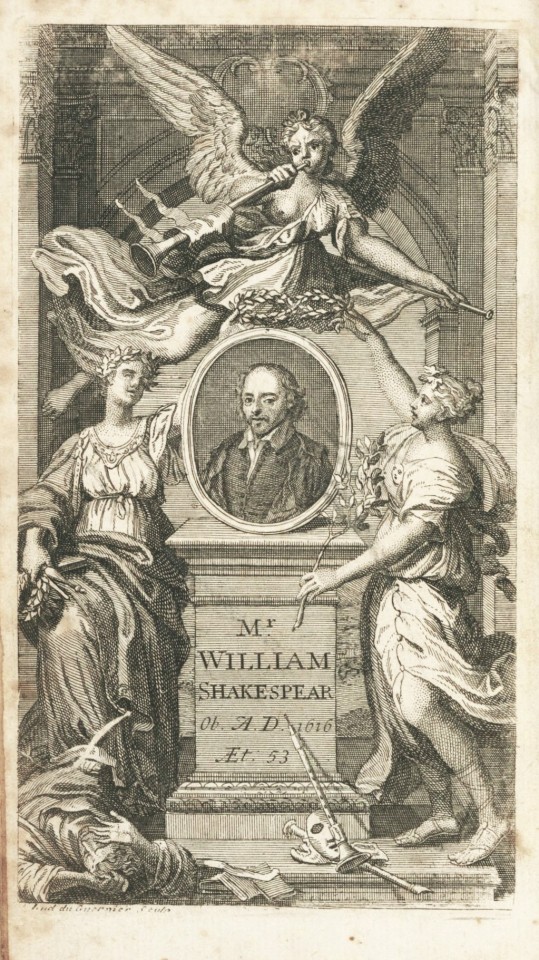
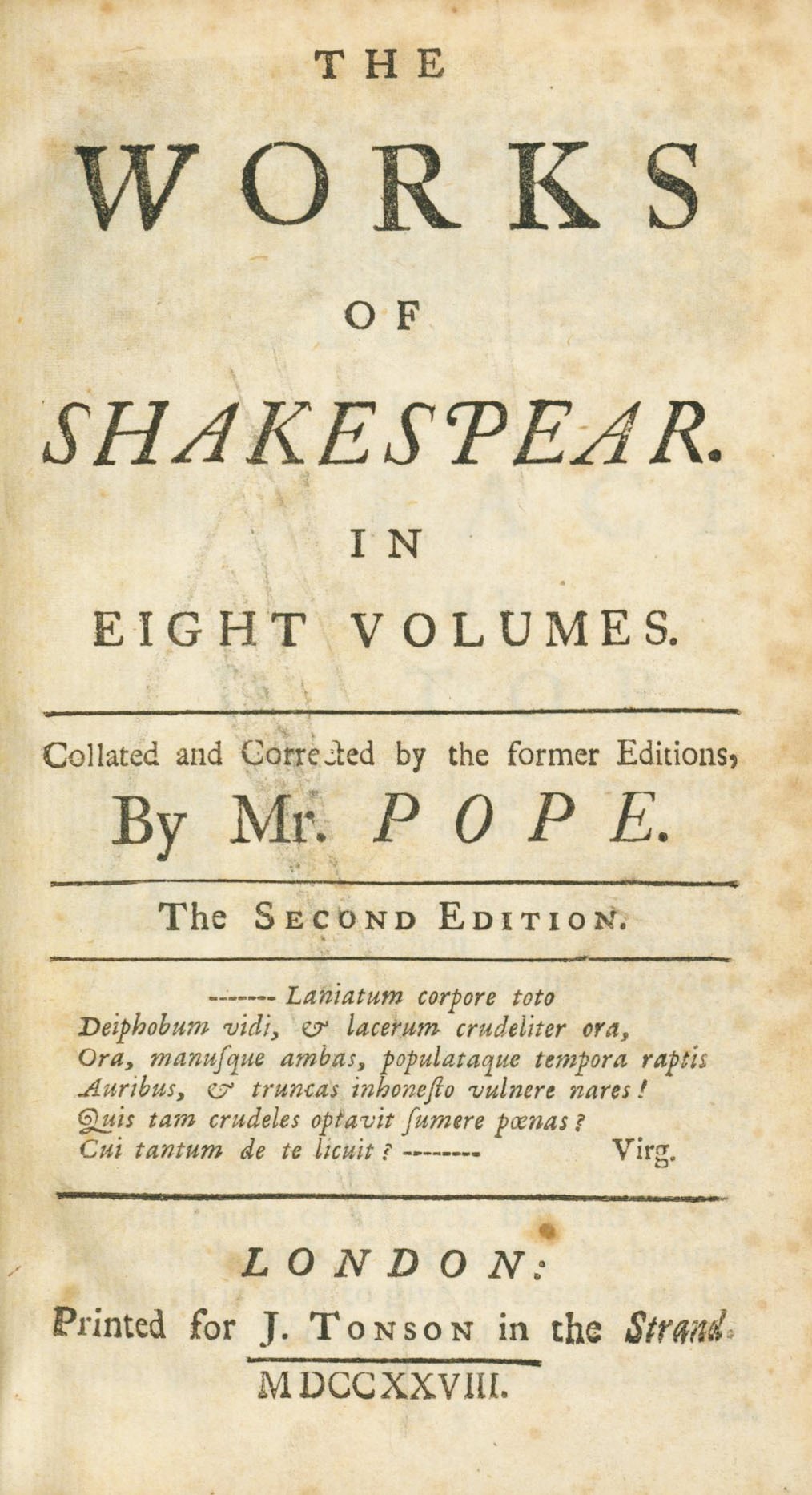
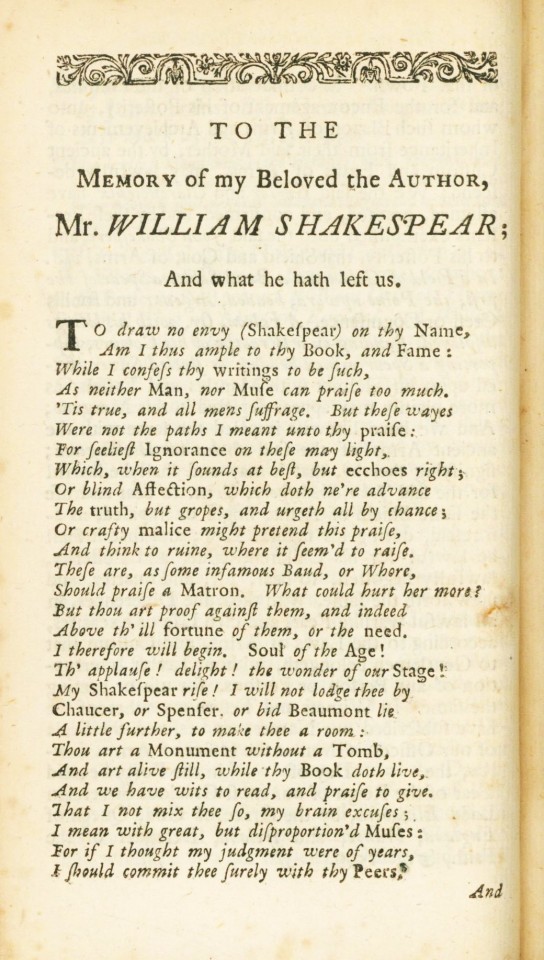
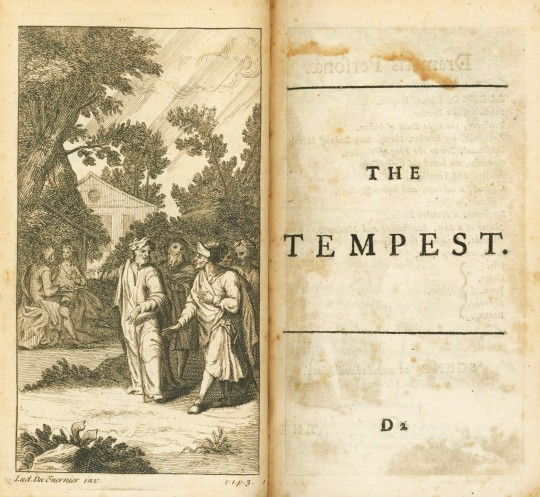
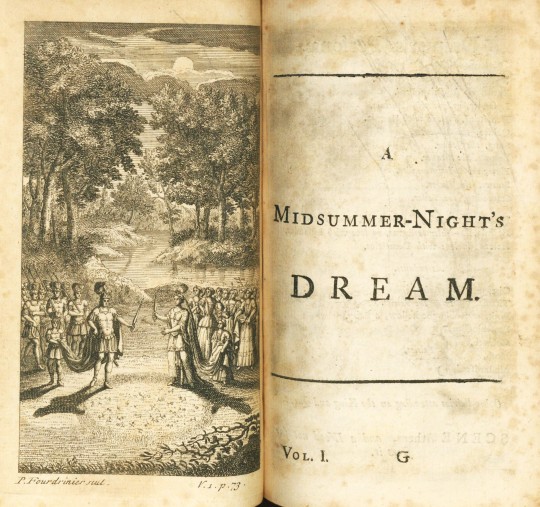
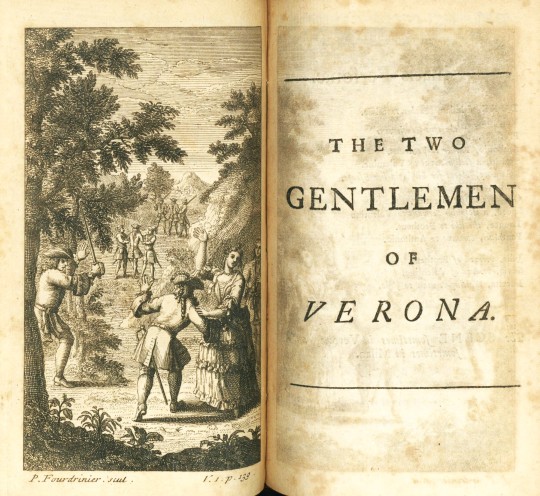
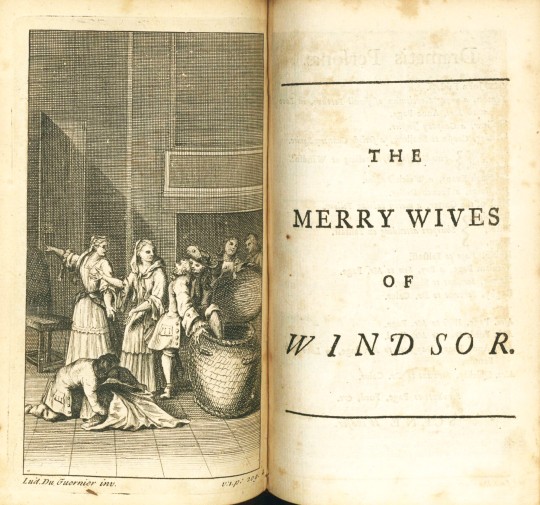

The next illustrated collection of Shakespeare from our holdings is the second edition of The Works of Mr. William Shakespear: In Ten Volumes published by Alexander Pope (1688-1744) and Dr. George Sewell (d. 1726) for Jacob Tonson (1655-1736). Pope’s second edition was published in eight volumes in 1728, followed by supplementary ninth and tenth volumes. Sewell is only credited within the tenth volume.
Volume One includes a preface by Pope followed by Nicholas Rowe’s biographical essay Some Account of the Life of Mr. William Shakespear and a poem in memory of Shakespeare by English dramatist Ben Jonson (1572-1637). Plays contained within volume one include The Tempest, A Midsummer Night’s Dream, The Two Gentlemen of Verona, The Merry Wives of Windsor, and Measure for Measure.
Pope’s editions of Shakespeare were the first attempted to collate all previous publications in order to help determine authorial text and regularize Shakespearean metre. He consulted twenty-seven early quartos restoring passages that had been out of print for almost a century. Pope also took liberties in removing about 1,560 lines of material that didn’t appeal to him. Some such lines were degraded to the bottom of the page with his other editorial notes. At the time, his editorial hand was met with some criticism and dismissal but historically it may be seen as one of the first scholarly approaches to Shakespeare.
Pope followed in Rowe’s footsteps including scene divisions, stage directions, dramatis personae, and full-page engravings preceding each play. Volume One’s engravings are attributed to French artist Louis Du Guernier (1677-1716) and Englishman Paul Fourdrinier (1698-1758). Dedicated readers of Shakespeare Weekend may notice some of the engravings’ extreme similarities to François Boitard’s work from Rowe’s volumes, particularly in the frontispiece interpretation of Shakespeare's Stratford monument.
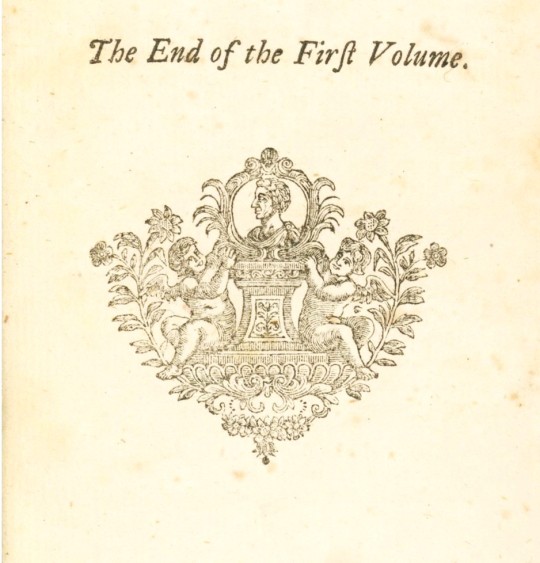
View more Shakespeare Weekend posts.
-Jenna, Special Collections Graduate Intern
#Shakespeare Weekend#william shakespeare#shakespeare#the works of mr. william shakespear: in ten volumes#alexander pope#dr. george sewell#george sewell#jacob tonson#nicholas rowe#ben johnson#the tempest#a midsummer night's dream#the two gentlemen of verona#the merry wives of windsor#measure for measure#louis du guernier#paul fourdrinier#francois boitard#engraving
35 notes
·
View notes
Text

#art#my art#fanart#silent hill#silent hill downpour#murphy pendleton#george sewell#silent hill cupcake
23 notes
·
View notes
Text









~ George Sewell ~ Gen One ~ Founder ~
Read George's story here.
9 notes
·
View notes
Text
"BLEAK HOUSE" (1985) Review
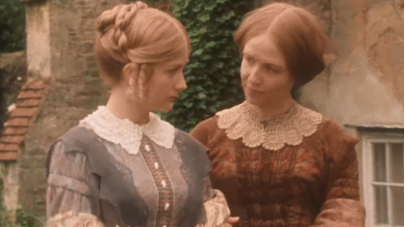
"BLEAK HOUSE" (1985) Review
In less than I year, I have developed this fascination with the works of Charles Dickens. How did this come about? I do not know. I have seen previous Dickens movie and television adaptations in the past. But ever since last year, I have been viewing these adaptations with a vengeance. And one of them turned out to be "BLEAK HOUSE", the 1985 adaptation of Dickens' 1852-53 novel.
Adapted by Arthur Hopcraft, this eight-episode miniseries conveyed the affects of Jarndyce v Jardyce, a long-running legal probate case involving the existence of more than one will. The heirs and their descendants have been waiting decades for the court to determine the legal will, for the sake of a large inheritance. Among those affected by the Jarndyce v Jardyce case are:
*John Jarndyce - a wealthy English landowner, who happens to be the proprietor of the estate, Bleak House. Jarndyce had inherited it from his uncle Tom Jarndyce, who had went mad waiting for a verdict on the case before committing suicide. *Richard Carstones - Tom Jarndyce's grandson and John Jarndyce's cousin, who also became one of the latter's legal wards, and a potential beneficiary of the Jarndyce v Jardyce case. *Ada Clare - Tom Jarndyce's granddaughter and Mr. Jarndyce's cousin, who also became one of his legal wards, and a potential beneficiary of the Jarndyce v Jardyce case. She and Richard, also cousins, became romantically involved. *Esther Summerson - one of the novel's main characters and orphan, who became Mr. Jarndyce's ward following the death of her previous guardian, Miss Barbury, who had also been her biological aunt. She joined the Bleak House household as Ada's companion and Mr. Jarndyce's housekeeper after he became the guardian of Richard and Ada. *Honoria, Lady Dedlock - the wife of baronet Sir Leicester Dedlock and a beneficiary of the Jarndyce v Jardyce case. She is also the younger sister of Miss Barbury and Esther's illegitimate mother. *Captain John Hawdon aka Nemo - a former British Army officer, who became an impoverished law writer and drug addict. He is also Lady Dedlock's former lover and Esther's illegitimate father. His penmanship on one of the Jarndyce v Jardyce affidavit attracts Lady Dedlock's attention. *Mr. Bill Tulkinghorn - Sir Leicester's ruthless lawyer, who noticed Lady Dedlock's reaction to the affidavit. This leads him to investigate her past and possible connection to Hawdon aka "Nemo". *Miss Flite - An elderly woman living in London, whose family had been destroyed by a long-running Chancery case similar to Jarndyce v Jarndyce. This has led her to develop an obsessive fascination with Chancery cases, especially the main one featured in this story. She quickly befriended Esther, Richard, Ada and Mr. Jarndyce.
As one can see, these characters represented plot arcs that connect to the Jarndyce v Jarndyce case. As one of the beneficiaries of the Jarndyce case, Richard becomes obsessed with the verdict. He seemed more interested in depending upon the Jarndyce verdict to provide him with an income rather than pursue a profession. This obsession eventually led to a clash between and Mr. Jarndyce, who has tried to warn him not to get involved with the case. Another clash formed between Lady Dedlock and Mr. Tulkinghorn, due to his determination to find proof of her past with Nemo and the conception of their child. A clash that proved to create even more damaging for a good number of people, than the one between Mr. Jarndyce and Richard. In the midst of all this stood Esther, who served as an emotional blanket for several characters - especially the inhabitants at Bleak House, a potential romantic figure for three men (ironic for a woman who was not supposed to be a great beauty), and the center of the Lady Dedlock-Nemo scandal.
For years, 1985's "BLEAK HOUSE" had been viewed as the superior adaptation of Dickens' novel. The first novel aired back in 1959. But a third television adaptation that aired in 2005 had managed to overshadow this second adaptation's reputation. But this is not about comparing the three adaptations. I am focusing only the 1985 miniseries. If I might be blunt, I believe screenwriter Arthur Hopcraft and director Ross Devenish created one of the better Charles Dickens I have personally seen. Granted, one might use the source material - the 1952-53 novel - as the reason behind the miniseries' top quality. But I have seen my share of poor adaptations of excellent source material . . . and excellent adaptations of poor or mediocre novels and plays. And I would find this excuse too simply to swallow. Hopcraft and Devenish could have easily created a poor or mediocre adaptation of the novel. Fortunately, I believe they had managed to avoid the latter.
With eight episodes, Hopcraft and Devenish did an excellent job in conveying Dickens' exploration into the chaos of the legal landscape in 19th century Britain, especially cases involving the Chancery courts. One might consider the longevity of Jarndyce v Jarndyce rather exaggerated. However, I speak from personal experience that an extended length of time in such a case is more than possible. But what I thought the effect of Jarndyce v Jarndyce and similar cases in Dickens' story seemed very interesting. In Richard Carstone's case, I suspect his own hubris and upbringing had allowed the case to have such a toxic effect upon him. He had been raised as a gentleman. Which meant he was not expected to work for a living. But since he did not possess a fortune or an estate - like Mr. Jarndyce - Richard never lost hope that the court would rule the Jarndyce v Jarndyce case in his favor, allowing him to inherit a great deal of money. Although it took another case to send Miss Flyte mentally around the bend, I found it interesting that her obsession with Chancery cases led her to attach her interest to the Jarndyce case beneficiaries.
The Jarndyce case also produce a group of leeches in the forms of attorneys like Mr. Tulkinghorn and his obsession with assuming control over the Dedlocks and Mr. Vholes, who had sucked a great deal of money from Richard in exchange for his legal services. The series also featured the vicious moneylender Mr. Smallweed, who helped Mr. Tulkinghorn in the latter's campaign against Lady Dedlock; and Mr. Jarndyce's "friend", Harold Skimpole, who had not only encouraged Richard to pursue a greater interest in the Jarndyce case, but also had accepted a "commission" from Vholes to recruit the young man as a client. Would I regard William Guppy as a leech? Sometimes. I had noticed that one particular story arc was missing - namely the story arc regarding the philanthropist Mrs. Jellyby, her daughter and Esther's friend, Caddy and the Turveydrop family. This did not bother me, for I have never been a fan of that particular arc.
However, I also noticed that "BLEAK HOUSE" featured a few moments in which important plot points had been revealed through dialogue or shown after the fact. Audiences never saw Skimpole convince Richard to hire Mr. Vholes. Instead, Mr. Jarndyce had revealed this incident after it happened. The whole scenario regarding Dr. Allan Woodcock being a survivor of a shipwreck was handled as a past event revealed by the good doctor himself. Hopcraft's script never stretched it out in the same manner as Dickens' novel or the 2005 miniseries. Audiences never saw George Rouncewell's release from jail, for which he had been incarcerated for murder. Instead, Episode Seven began with George in jail and later, near the end, found him serving as Sir Leicester's valet without any information on how that came about.
"BLEAK HOUSE" featured a few other writing and direction decisions by Hopcraft and Devenish that I found . . . well, questionable. Why did the pair solely focused on Lady Dedlock in the series' penultimate episode and Richard and the Jarndyce v Jarndyce case in the final one? Would it have been so difficult for them to switch back and forth between the two arcs in those final episodes? I found Inspector Bucket's resolution to the story's murder mystery rather rushed. I would have liked to see Bucket eliminate suspects before solving the case. In Bucket's final scene with the killer, Hopcraft left out that moment from the novel when the latter had the last scathing word on British society, leaving the police detective speechless. This erasure dimmed the impact of Dickens' message and made the killer even more of a caricature. I had some issues with how Devenish directed certain performances. How can I put this? I found them a bit theatrical.
I have one last issue - namely Kenneth MacMillan's cinematography. I realize that in "BLEAK HOUSE", fog represented institutional oppression and human confusion and misery in society. Unfortunately, I feel that MacMillan may have been heavy-handed in utilizing this symbol in the series. It is bad enough that photography featured a fuzzy element that seemed popular in many period productions in the 1970s. But thanks to MacMillan's use of fog in the story, there were many moment in which I could barely see a damn thing. And I found that irritating.
Aside from a few quibbles, I had no real issues with the performances featured in "BLEAK HOUSE". One of those quibbles proved to be the performances for some of the secondary cast members. How can I say this? The exaggerated and wooden performances for some of the cast members brought back memories of some of the minor actors' bad performances in 1982 miniseries, "THE BLUE AND THE GRAY". I must admit that I did not care for Pamela Merrick's portrayal of Lady Dedlock's French maid, Madame Hortense. Her performance bordered and then surpassed the lines of caricature - as some British actors/actresses tend to do. Charlie Drake's portrayal of the moneylender Smallweed tend to waver between a pretty solid performance and pure caricature. Although there were moments when I found her portrayal of the eccentric Miss Flyte a bit hammy, I must admit that Sylvia Coleridge gave a well-done performance. Chris Pitt's performance as Jo, the crossing sweeper boy struck me as very poignant. Yet, at the same time, he seemed so passive that at times, I found it difficult to believe he had survived on the streets on his own, for so long. Jonathan Moore, whom I had remembered from the 1988 television movie, "JACK THE RIPPER"; did an excellent job of conveying the ambitious and self-interested nature of law clerk William Guppy. However, his portrayal of Guppy seemed to lack the character's comedic nature. Denholm Elliot gave a very interesting performance as Esther, Richard and Ada's guardian, John Jarndyce. On one level, I found his portrayal of the kind-hearted Mr. Jarndyce as first-rate. Excellent. But there were moments, including the character's famous quote following Jo's death, when Elliott's Mr. Jarndyce seemed to resemble one of those "angry young men" characters from a John Osbourne play. I found those moments very odd.
However, there were performances that did not leave me scratching my head. Colin Jeavons and Anne Reid gave very competent performances as the grasping solicitor Mr. Vholes and George Rouncewell's close friend Mrs. Bagnet, respectively. Ironically, Jeavons had portrayed Richard Carstone in the 1959 adaptation of "Bleak House" and Reid had portrayed Mrs. Rouncewell in the 2005 television adaptation. Both Suzanne Burden and Lucy Hornak gave solid performances as Esther Summerson and Ada Clare. And yet, both actresses managed to rise to the occasion with some brilliant moments. Burden's moment came, following Esther's realization that she had survived the smallpox. As for Hornak, she gave an excellent performance during Ada's soliloquy about her love's growing obsession with the Jarndyce case. Brian Deacon gave a passionate performance as Dr. Allan Woodcourt, the penniless doctor in love with Esther. Ian Hogg gave a very solid, yet commanding performance as Inspector Bucket. I really enjoyed Sam Kelly's warm portrayal of the law-stationer, Mr. Snagsby. Bernard Hepton gave one of the most colorful performances of his career as the alcoholic rag and bone shopkeeper, Krook. Dave King gave a very solid performance as the loyal, yet intimidating and conservative former Army sergeant George Rouncewell. I found George Sewell's performance as Sergeant Rouncewell's older brother, the wealthy Mr. Rouncewell not only entertaining, but very memorable. I thought Robin Bailey did an excellent job portrayed the haughty and proud Sir Leicester Dedlock.
But there were four performances that really impressed me. One came from Philip Franks, who did an excellent job of conveying Richard Carstone's emotional journey from John Jarndyce's warm and friendly young man, to the more embittered one, obsessed with the Jarndyce case. T.P. McKenna gave a delicious performance as Mr. Jarndyce's self-involved friend, Harold Skimpole, who proved to be quite the emotional (and financial) vampire. I thought Peter Vaughan was superb as the Dedlocks' sinister lawyer, Mr. Tulkinghorn. I was amazed by how Vaughn managed to combine the character's dedication to protecting his client Sir Leicester and his penchant for assuming control over others. If I had voted for the best performance featured in "BLEAK HOUSE", I would choose Diana Rigg's portrayal of the tragic Honoria, Lady Dedlock. I believe the actress gave a brilliant performance as the mysterious, yet complicated baronet's wife, whose cool demeanor hid a great deal of emotions and a personal secret. I am shocked and amazed that neither she, Vaughn, McKenna or Franks had ever received any accolades for their performances.
In fact, I am surprised that "BLEAK HOUSE" had only received BAFTA nominations (and won three) . . . and they were in the technical/arts category, aside for the Best Drama Series/Serial. No Primetime Emmy nominations, whatsoever. Was this eight-part miniseries the best adaptation of Charles Dickens' 1852-53 novel? I cannot answer that question. Granted, it had its flaws. But what television or movie production did not? But I cannot deny that "BLEAK HOUSE" was a first-rate miniseries that deserved more accolades than it had received, thanks to Arthur Hopcraft's screenplay, Ross Devenish's direction and an excellent cast led by Suzanne Burden, Denholm Elliott and Diana Rigg.

#charles dickens#bleak house#bleak house 1985#arthur hopcraft#ross devenish#suzanne burden#denholm elliott#diana rigg#peter vaughan#philip franks#lucy hornak#colin jeavons#anne reid#dave king#george sewell#robin bailey#brian deacon#chris pitt#sam kelly#ian hogg#jarndyce v. jarndyce#jonathan moore#pamela merrick#sylvia coleridge#charlie drake#bernard hepton#t.p. mckenna#victorian age#period drama#period dramas
4 notes
·
View notes
Text

Jasper Carrott, George Sewell and Robert Powell in "The Detectives"
2 notes
·
View notes
Text
The 2025 WIP Big Bang & WIP Reverse Bang Are Open For Sign-Ups!

Welcome to a new round! We're bringing back the OG WIP Big Bang, which is for finishing fic and getting art to go with it, and introducing the first full round of the WIP Reverse Bang, which is for finishing artwork and getting fic to go with it. All fandoms/ratings/ships are welcome, including original works!
Schedule
All times are by 11:59pm PST. Convert time zones.
Big Bang/Reverse Bang Sign-ups Begin- April 1st
Big Bang/Reverse Bang Sign-ups Close- May 28th
Big Bang/Reverse Bang Check In #1- May 22nd
Big Bang/Reverse Bang Check In #2- June 15th
Big Bang/Reverse Bang Snippets Due- July 1st
Big Bang Art Claims/Reverse Bang Fic Claims Begin- July 17th
Big Bang/Reverse Bang Check In #3- July 22nd
Big Bang/Reverse Bang Check In #4- August 6th
Big Bang/Reverse Bang Rough Drafts Due- August 15th
Big Bang/Reverse Bang Posting Claims Begin- August 23rd
Big Bang/Reverse Bang Posting Claims Ends- September 1st
Big Bang/Reverse Bang Final Drafts/Art & Fic Due- September 7th
Big Bang/Reverse Bang Posting Starts- September 8th
SIGN UP LINKS
WIP Big Bang | WIP Reverse Bang
FAQ
#silent hill downpour#signal boost#fanfiction#fanfic#fanart#wip reverse bang#wip big bang#murphy pendleton#patrick napier#anne cunningham#howard blackwood#jp sater#george sewell#bobby ricks#frank coleridge
0 notes
Text













Dark City (1998)
286 notes
·
View notes
Text

16 notes
·
View notes
Text
Shakespeare Weekend

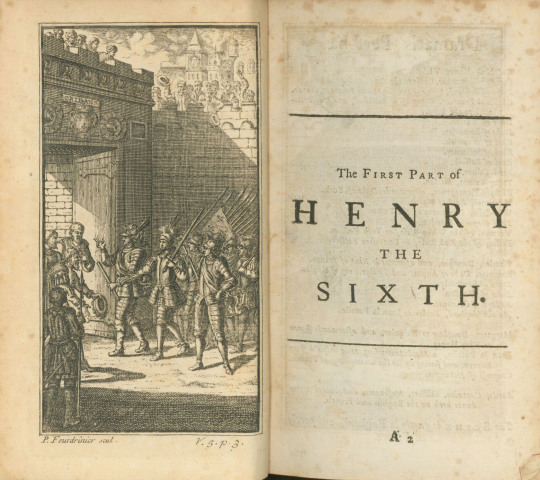
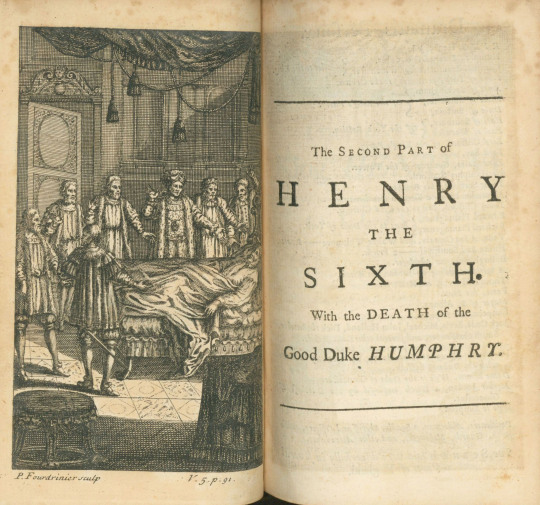


This weekend we return to The works of Mr. William Shakespear: in ten volumes with the fifth volume published in 1728 by Alexander Pope (1688-1744) and Dr. George Sewell (d. 1726) for Jacob Tonson. Volume Five is made up of King Henry VI Part I, King Henry VI Part II, King Henry VI Part III, and King Richard III. The four plays create a tetralogy that covers the entire saga of the Wars of the Roses, a series of 15th century civil wars fought to determine control of the English throne.
King Henry VI Part I enacts the loss of England’s French territories and the political momentum spurring on the Wars of the Roses. Part II delves into King Henry’s failings and the rise of the Duke of York. Part III documents the chaos and horror of war and contains one of the longest soliloquies in all of Shakespeare. The volume ends with King Richard III depicting the violent rise and short reign of King Richard III.
Like Rowe’s earlier collection, scene divisions, stage directions, dramatis personae, and full-page engravings by either French artist Louis Du Guernier (1677-1716) or Englishman Paul Fourdrinier (1698-1758) precede each play.
Pope’s editions of Shakespeare were the first attempted to collate all previous publications. He consulted twenty-seven early quartos restoring passages that had been out of print for almost a century while simultaneously removing about 1,560 lines of material that didn’t appeal to him. Some of those lines were degraded to the bottom of the page with his other editorial notes.
View more Shakespeare Weekend posts.
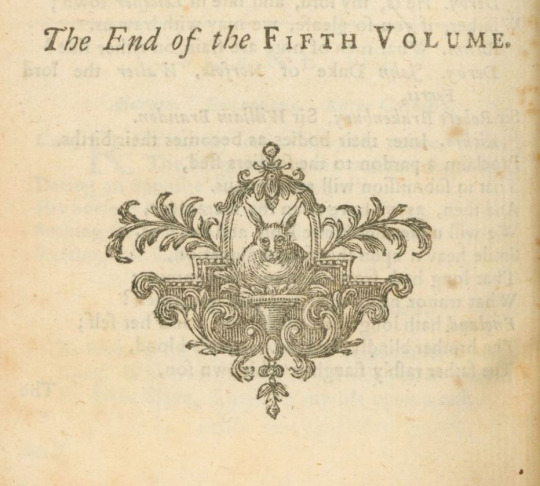
-Jenna, Special Collections Graduate Intern
#william shakespeare#shakespeare#alexander pope#dr. george sewell#jacob tonson#tetralogy#King Henry VI Part I#King Henry VI Part II#King Henry VI Part III#King Richard III#louis du guernier#paul fourdrinier#shakespeare weekend#engravings
23 notes
·
View notes
Text

Amos Sewell - Nightmare House
(Horror Stories, January 1935)
#amos sewell#george a. starbird#nightmare house#horror stories magazine#pulp art#illustration#horror art
39 notes
·
View notes
Photo
You see what I'm saying?
Kind, humble, mysterious and poetic...
with dark curly hair ✨️ 🤭
Also Dorothea's nickname Dodo is very appropriate to her love life. Hello?! And they say men don't get hints!


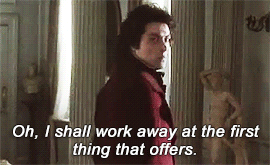
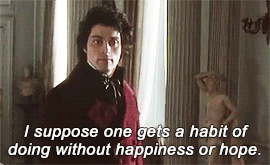
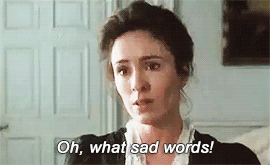


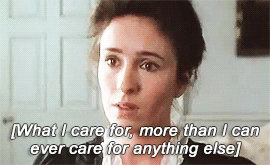
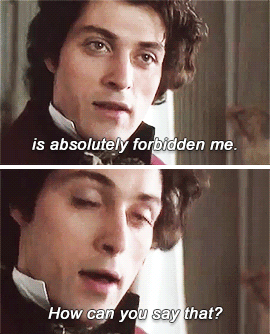

I wanted to say that under no circumstances would I have given men the chance of saying that I sought money under the pretext of seeking something else.
671 notes
·
View notes
Text

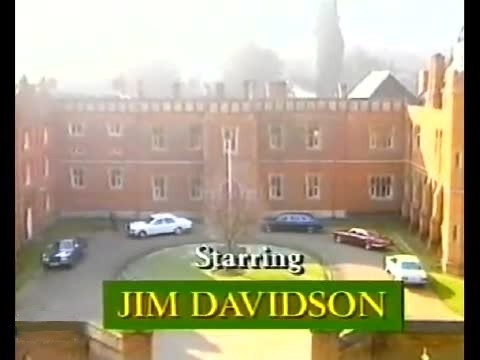


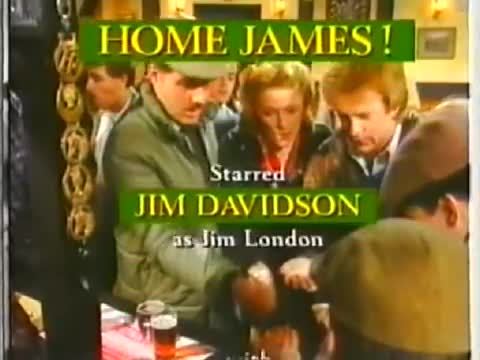
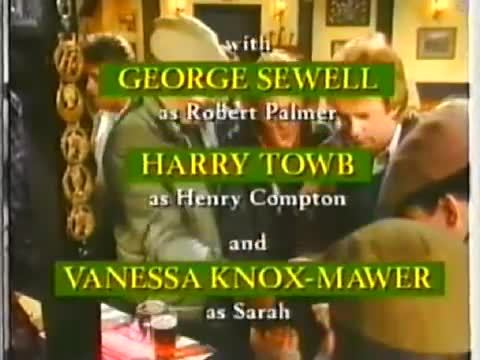

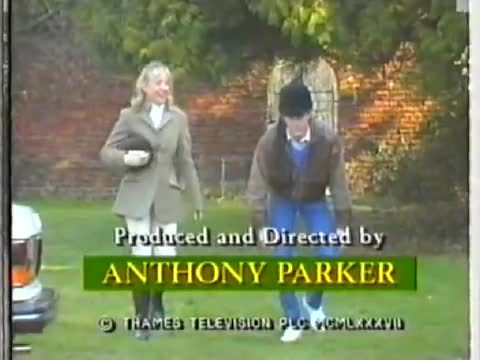
Home James! - ITV - July 1, 1987 - July 23, 1990
Sitcom (25 Episodes)
Running Time: 30 minutes
Stars:
Jim Davidson as Jim London
George Sewell as Robert Palmer
Harry Towb as Henry Compton
Vanessa Knox-Mawer as Sarah Palmer
Sherrie Hewson as Paula
Cecilia-Marie Carreon as Connie
Owen Whittaker as Terry
#Home James!#TV#Sitcom#ITV#1980's#Jim Davidson#George Sewell#Harry Towb#Vanessa Know-Mawer#Sherrie Hewson
1 note
·
View note
Text
OTTERSHAW PARK
The mansion






Hi guys!!
I'm sharing Ottershaw Park. This is the 18th building for my English Collection.
I decorated most of the house ground floor, for reference.
The interiors:











History of the house: In 1784 Thomas Sewell died and ownership of Ottershaw Park passed to his son, Thomas Bailey Heath Sewell, Lieutenant Colonel in the Surrey Fencible Cavalry. He sold it in 1796 to Edmund Boehm who improved the interior of the house and enlarged the estate by buying tracts of wasteland and allotments.
In about 1805 Boehm built, to the design of the eminent architect James Wyatt, two Grecian-style lodges at the new entrance to the estate from where a coach road ran to the mansion. The same architect may also have designed for Boehm the Gothic Chapel which originally served as a kitchen, bake house, dairy and pantry but was demolished in 1962.
Ottershaw Park was bought in 1819 by Major General Sir George Wood, a Lieutenant General in the Bengal Army. At this time the estate was largely self-supporting with stables, smithy, brew house, bake house, laundry, dairy, slaughter houses, ice house and two farms.
Sir George died in 1824 and the estate passed to his son, also named George, who in 1841 sold the property to Richard Crawshay who built a new bailiff’s house, farm buildings and brew house.
On Crawshay’s death in 1859 the estate was bought by Sir Thomas Edward Colebrooke MP, who made a number of alterations to the mansion. He also gave the money and land for the building of Christchurch and the first village school.
The estate was later sold to Lawrence James Baker, a stockbroker and MP who sold it in 1910 to the millionaire, Friedrich Gustav Jonathan Eckstein. Eckstein demolished the old mansion and replaced it with the present building designed by Niven & Wigglesworth which is more magnificent and much larger.
During World War I Eckstein made the building available to the British Red Cross as an Auxiliary Home Hospital but soon after the war sold it to Miss Susan Dora Cecilia Schintz, the daughter of a Swiss nitrates millionaire. Miss Schintz lost most of her sizeable inheritance through gifts to charity and bad investments and finally had to sell the estate. Much of it was acquired by the Ottershaw Park Investment Company (OPIC) which planned to develop the rim of the estate for housing. In 1932 the mansion and central part of the park became Ottershaw College, a boarding school for boys which for a short time was very successful, but eventually became insolvent and finally closed at the outbreak of World War II.
During the war The Vacuum Oil Company leased the mansion as offices and laboratories. From 1940 much of the surrounding land was either ploughed for crops or grazed as part of the war effort and the woodland areas were used by the 19 Vehicle Reserve Depot (VRD) for storing vehicles.
The Vacuum Oil Company moved back to London at the end of 1947 and Surrey County Council established Ottershaw School which was opened in 1948. The school prospered until 1980 when it closed due to financial constraints.
In 1982 the developers DeltaHome converted the mansion and other buildings into the present residential estate.
Link: https://www.exploringsurreyspast.org.uk/themes/places/surrey/runnymede/ottershaw/ottershaw_park_estate/
The garden:








More info: https://www.exploringsurreyspast.org.uk/themes/places/surrey/runnymede/ottershaw/ottershaw_park_estate/
The floorplan:




This house fits a 64x64 lot, but I think you can make it a 50x40 if you lose part of the garden and the conservatories on each side.
Piano nobile furnished, the rest is up to your liking.
Hope you like it.
You will need the usual CC I use:
all Felixandre cc
all The Jim
SYB
Anachrosims
Regal Sims
King Falcon railing
The Golden Sanctuary
Cliffou
Dndr recolors
Harrie cc
Tuds
Lili's palace cc
Please enjoy, comment if you like the house and share pictures of your game!
Follow me on IG: https://www.instagram.com/sims4palaces/
@sims4palaces
DOWNLOAD (only members-free to download)
#sims 4 architecture#sims 4 build#sims4#sims 4 screenshots#sims4building#sims 4 historical#sims4play#sims4palace#ts4#ts4 download#ts4 simblr#ts4 gameplay#ts4 screenshots#the sims 4#the sims community#sims 4#the sims#sims 4 gameplay#simblr#simblog#british history#stately home#sims4statelyhome
79 notes
·
View notes